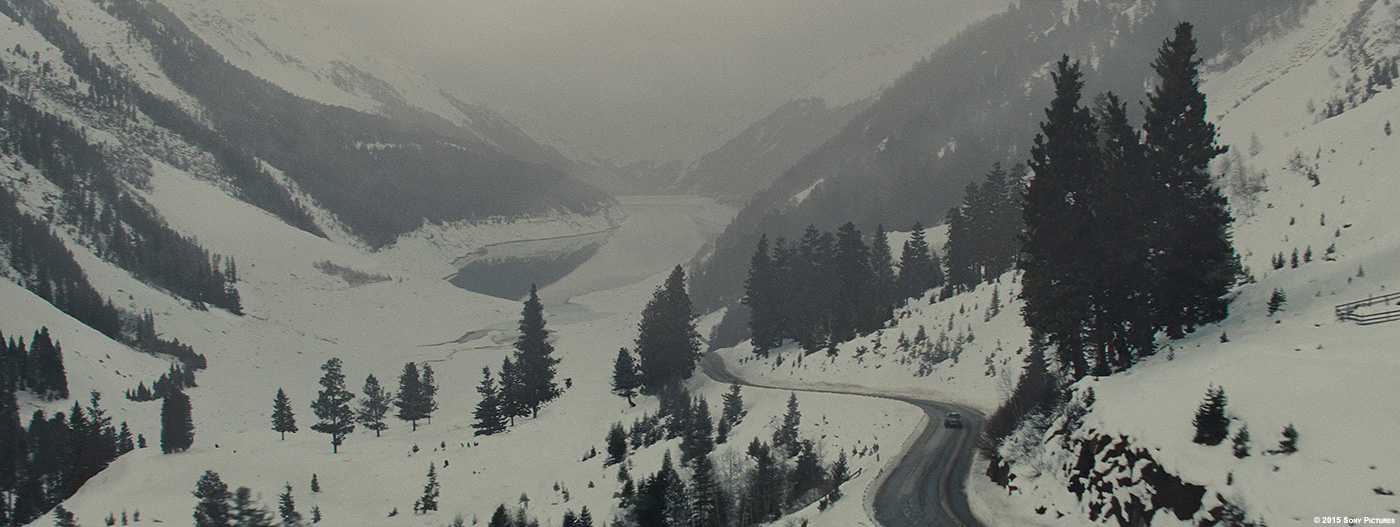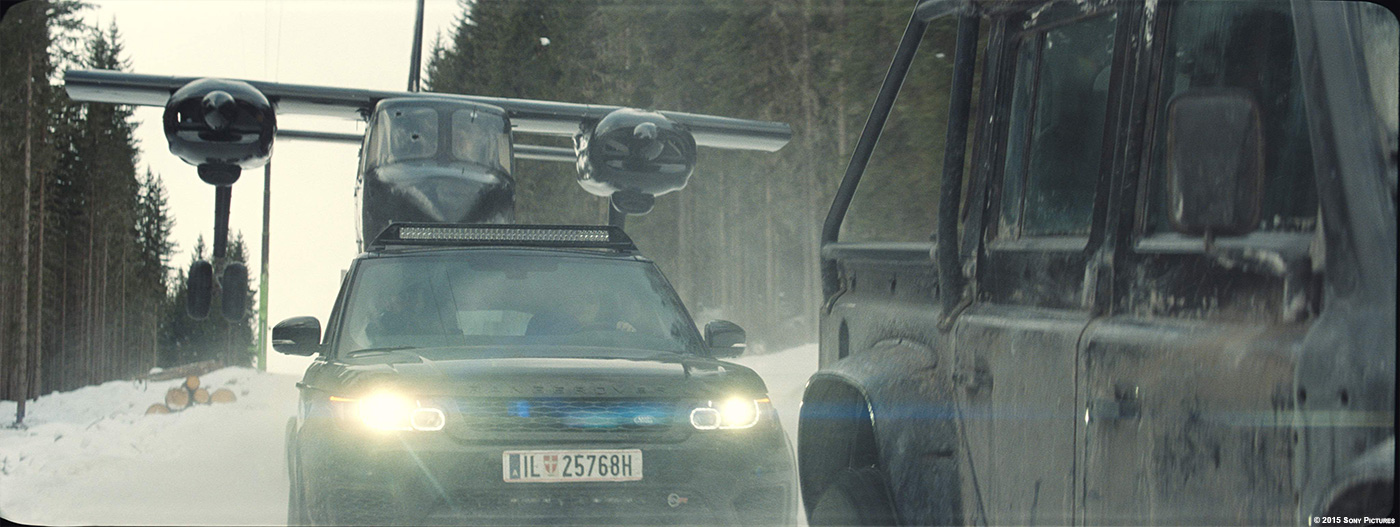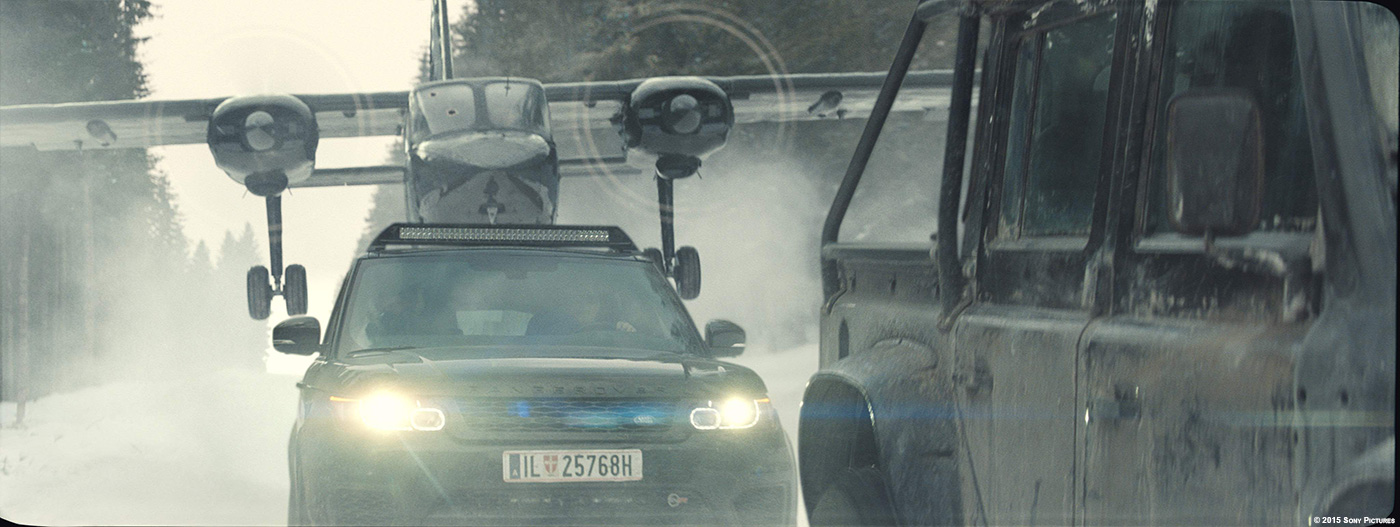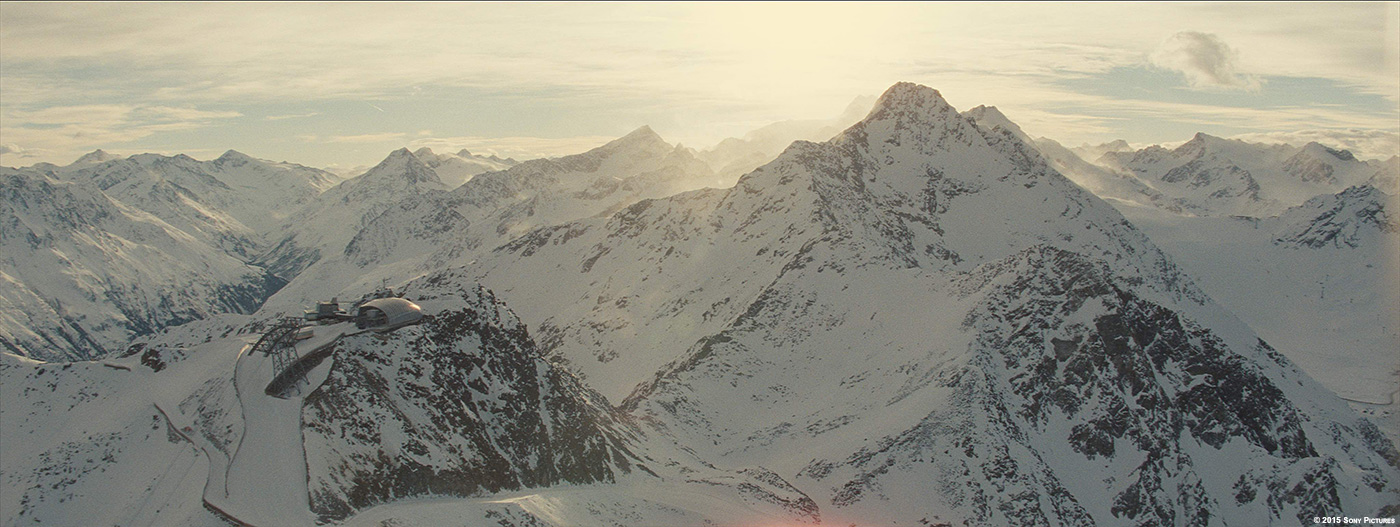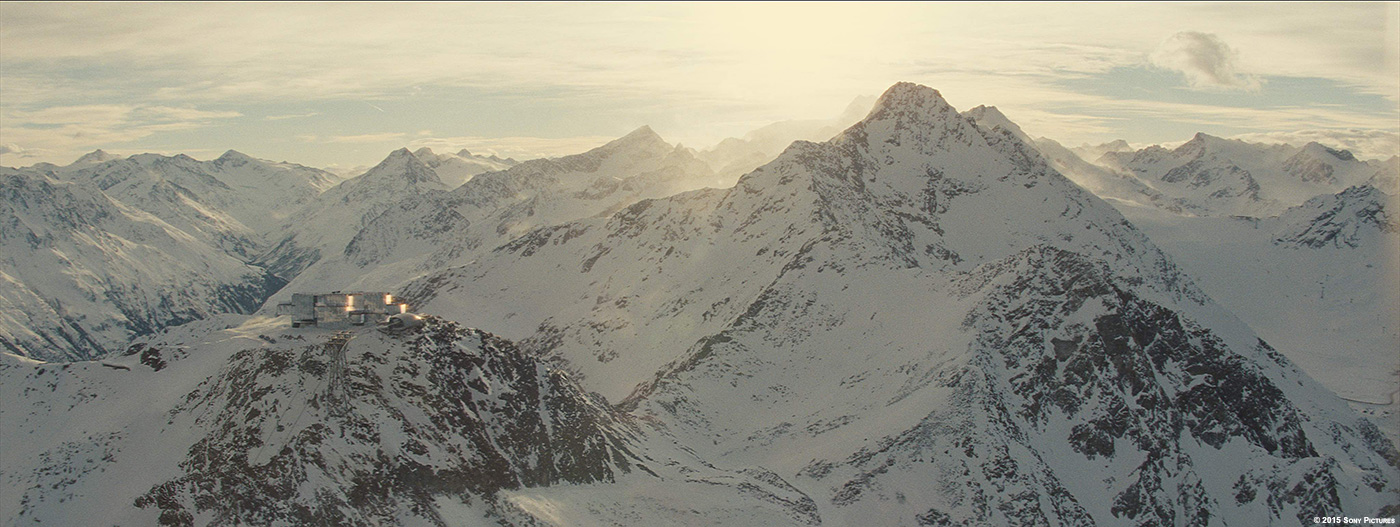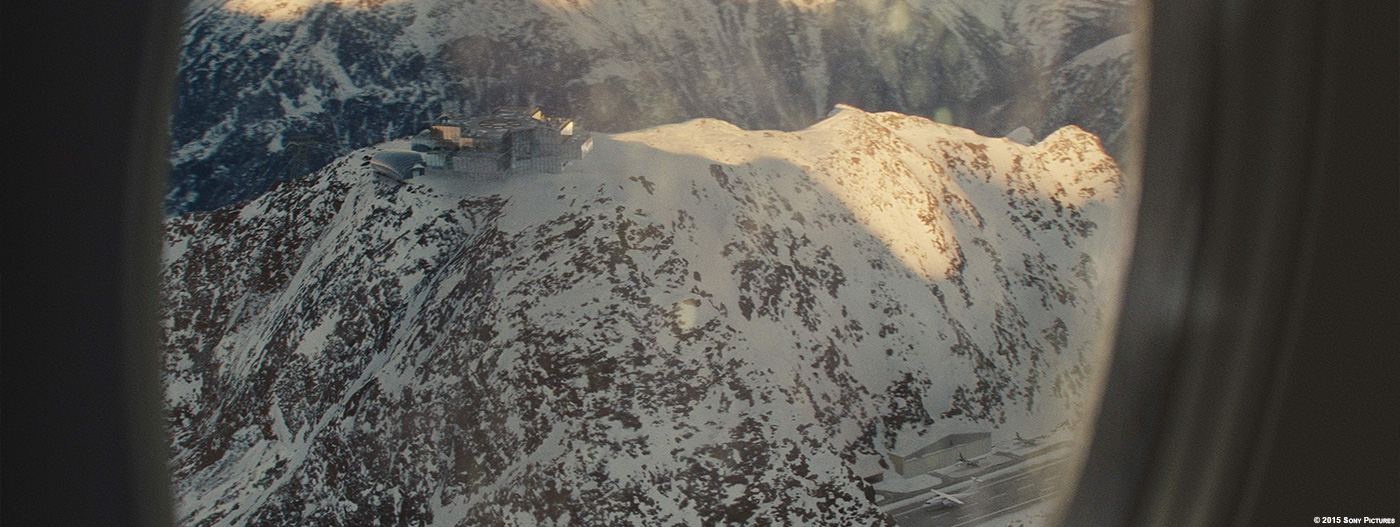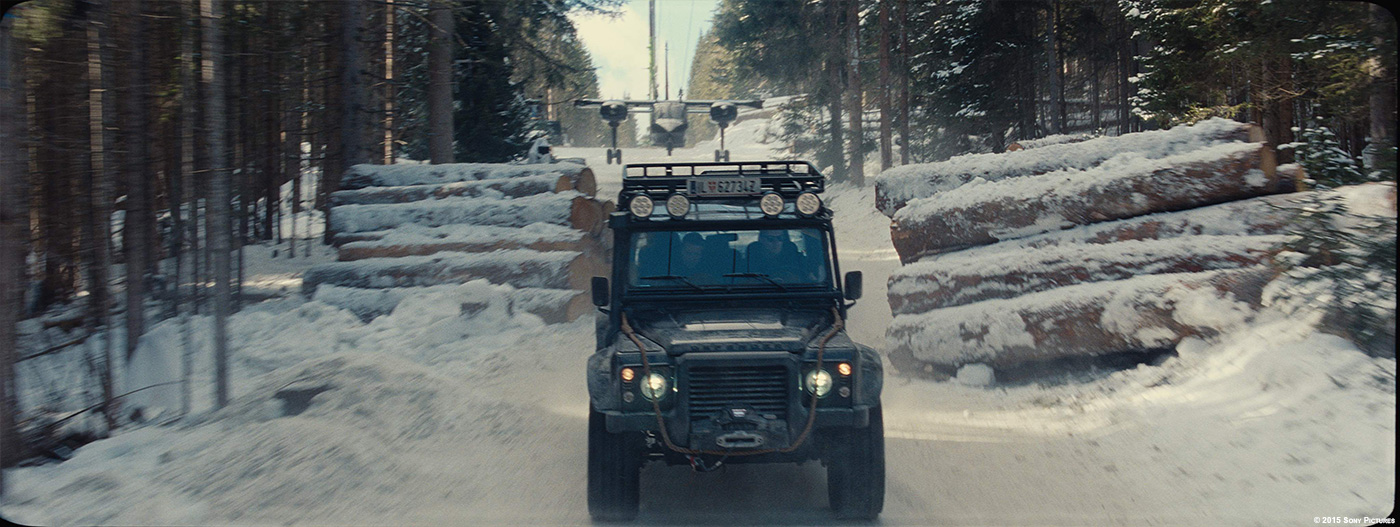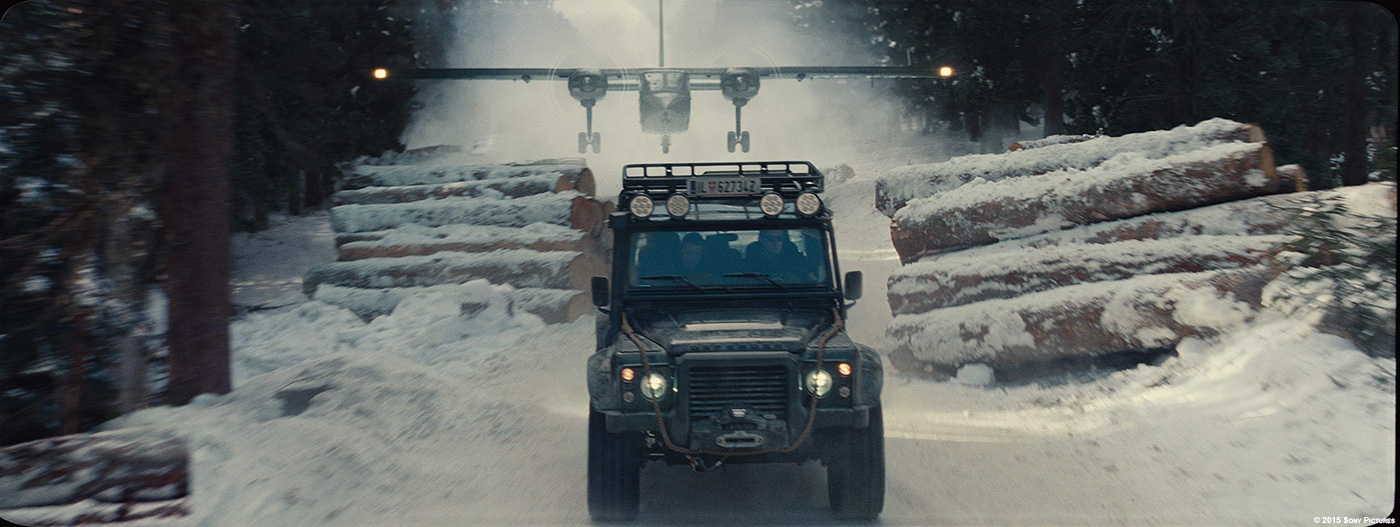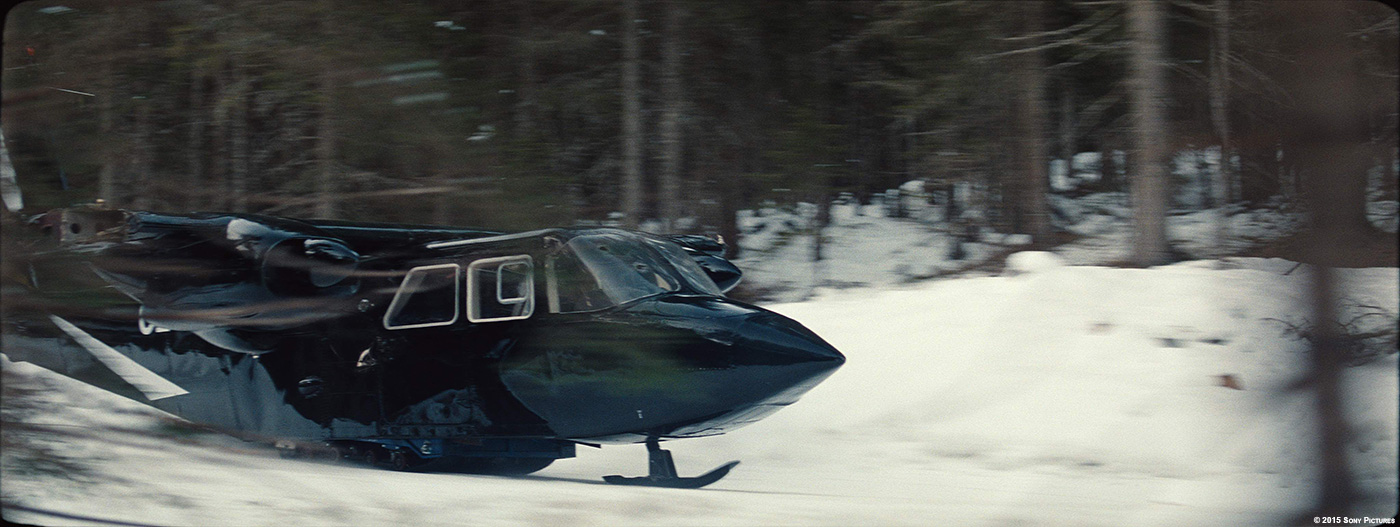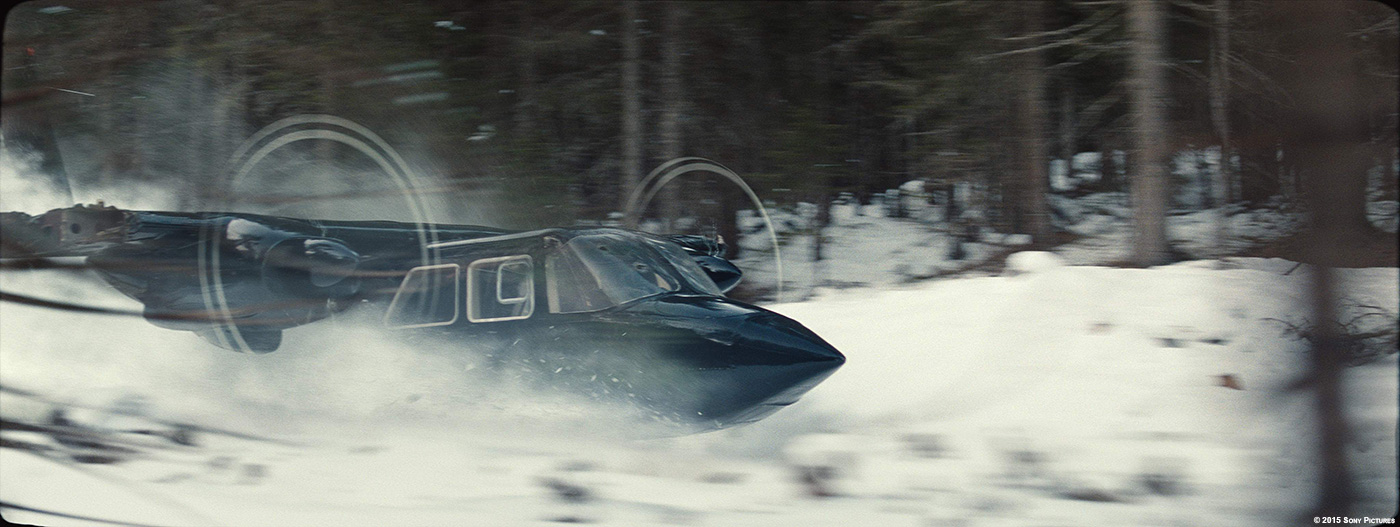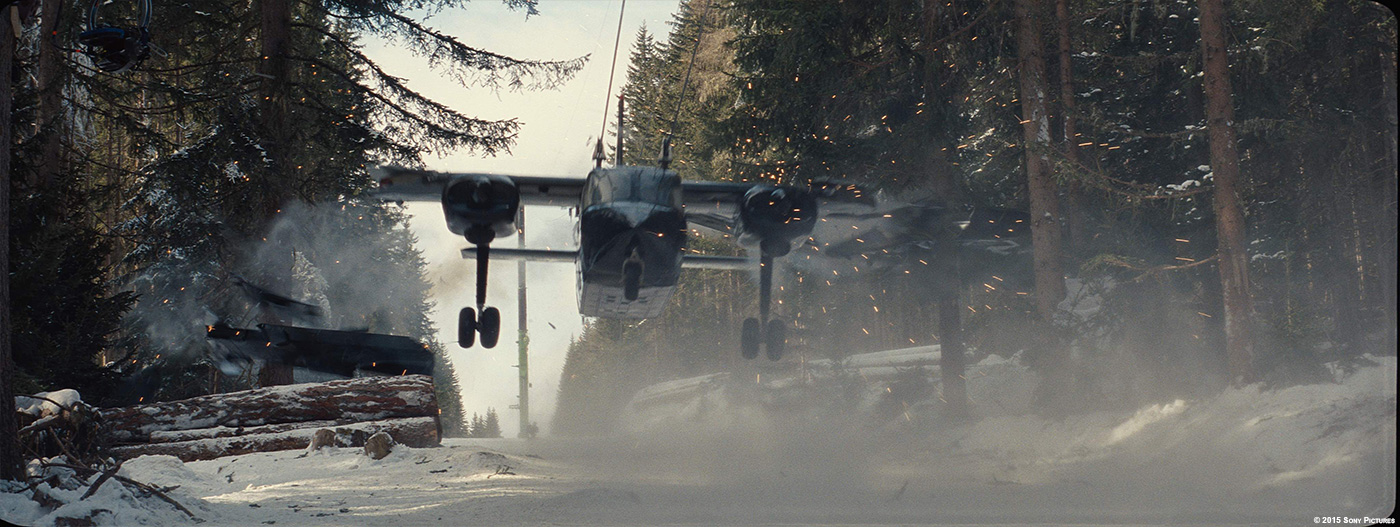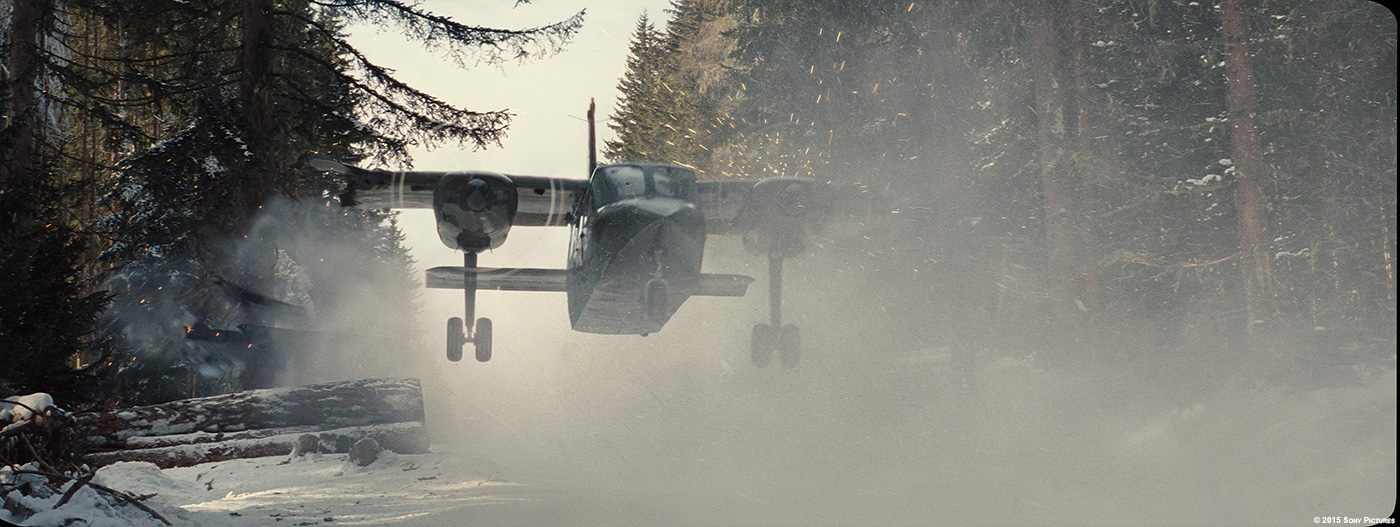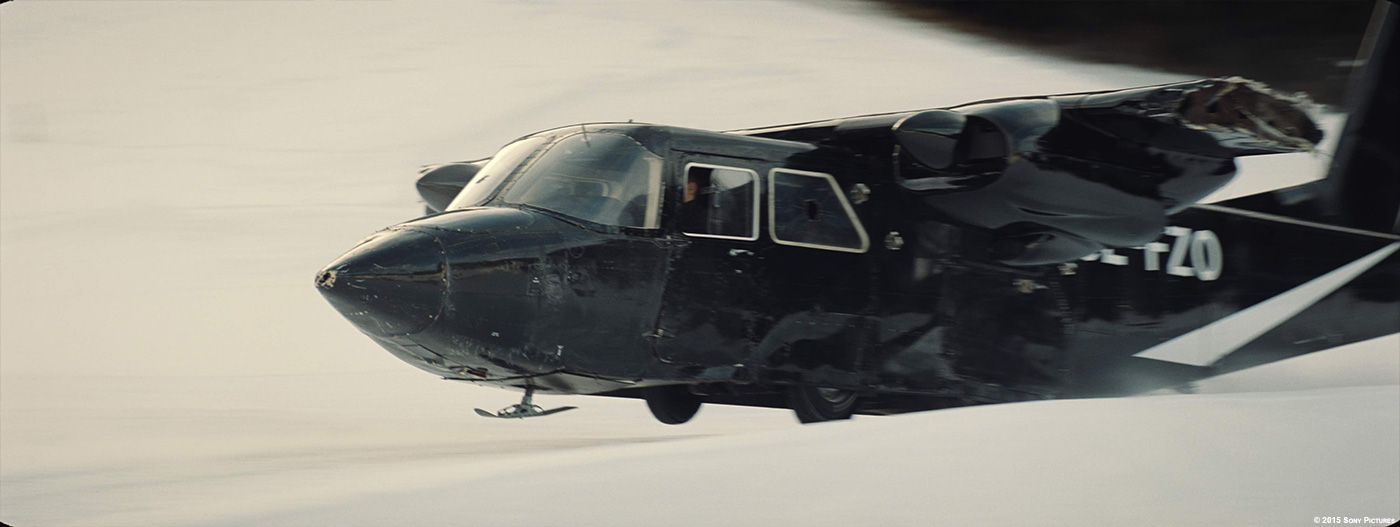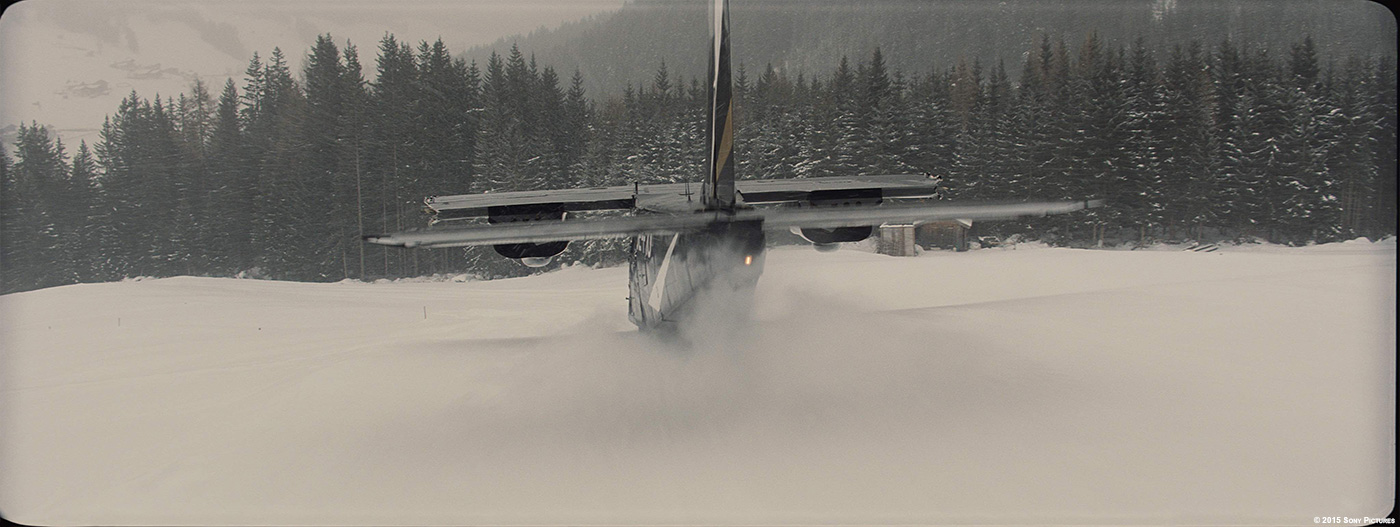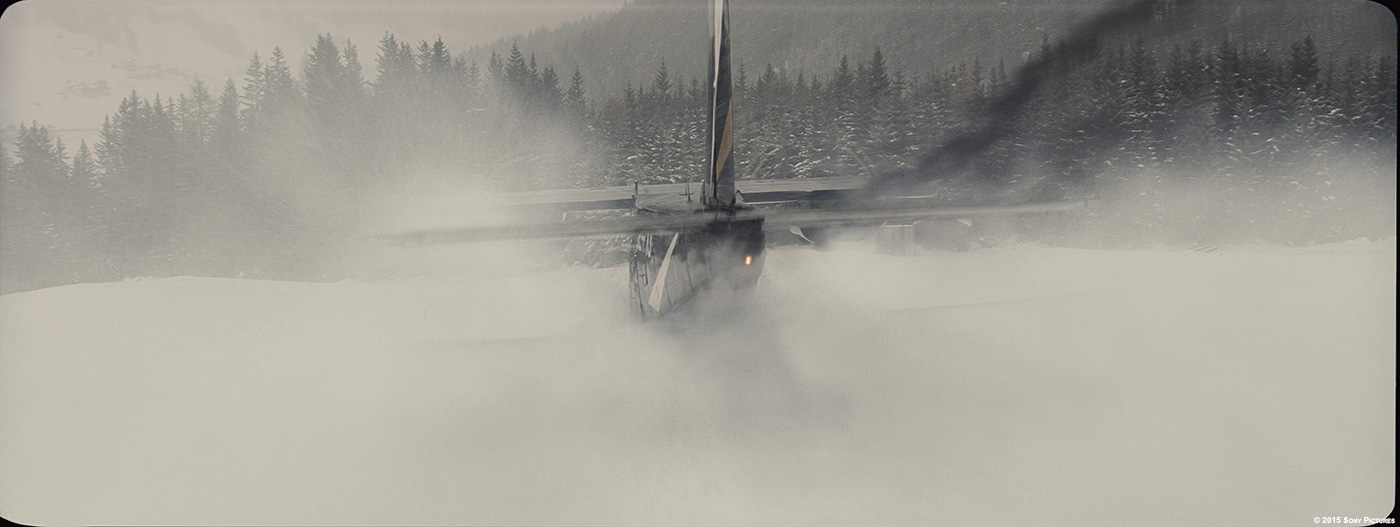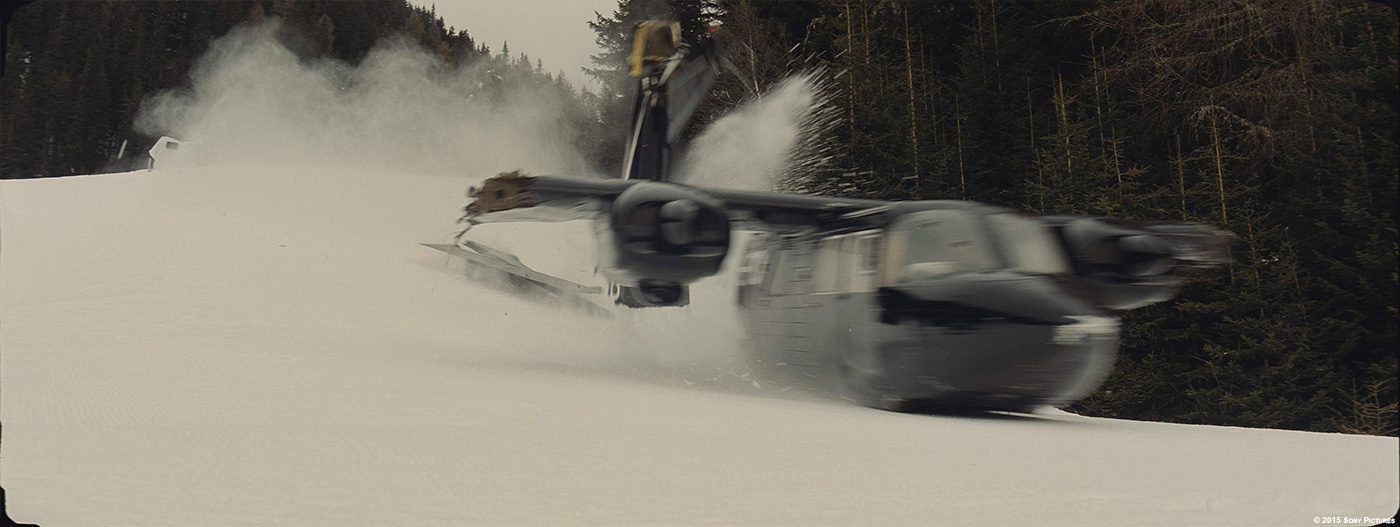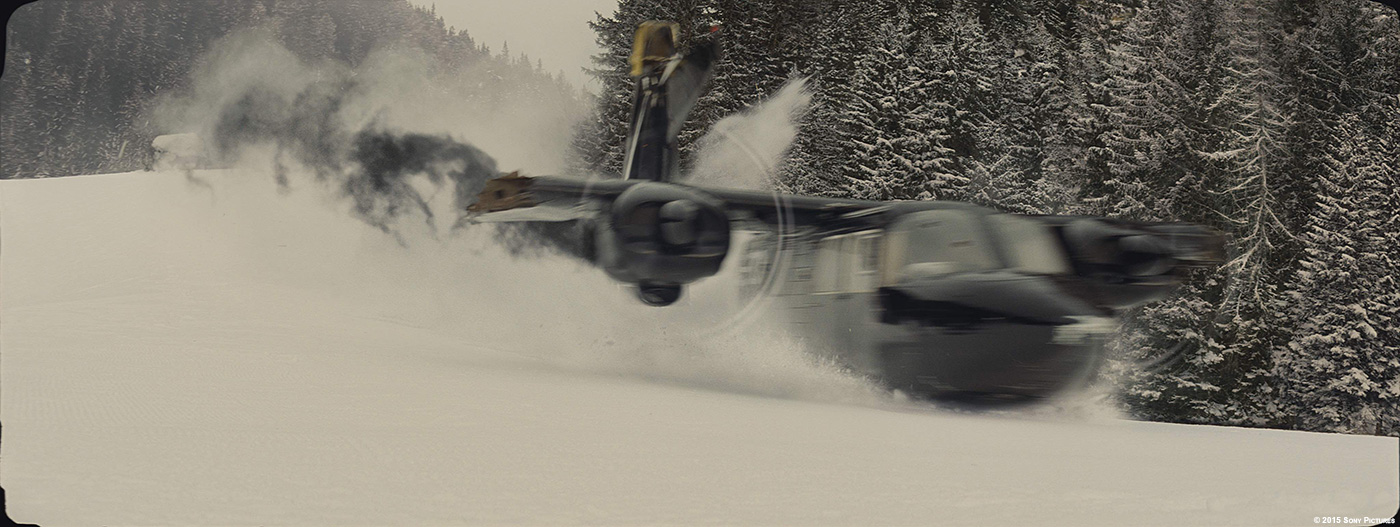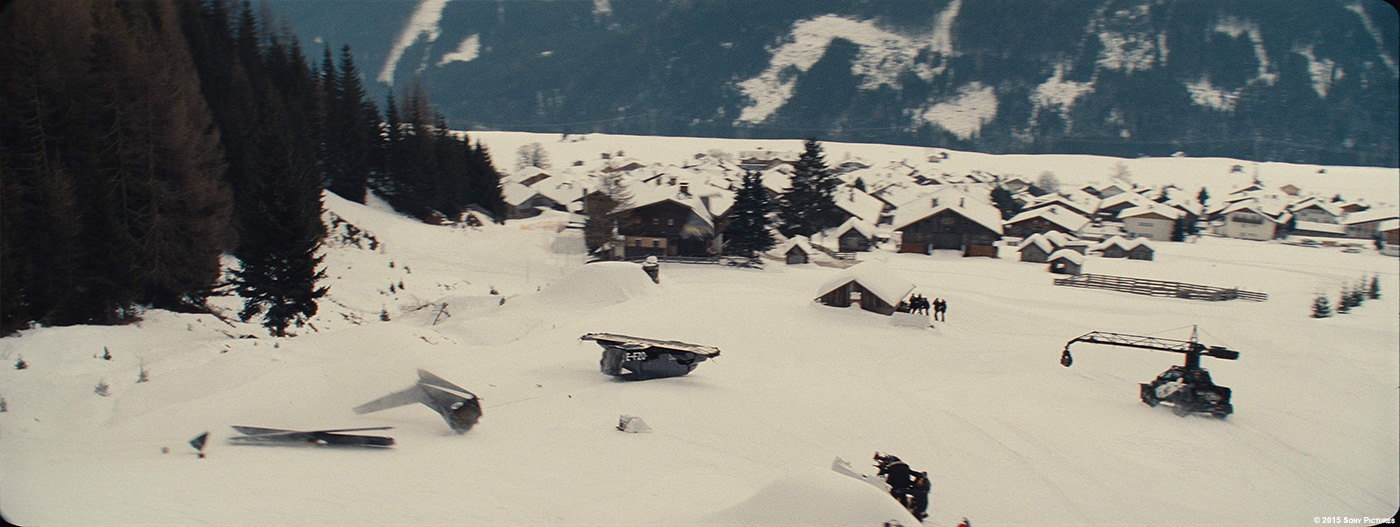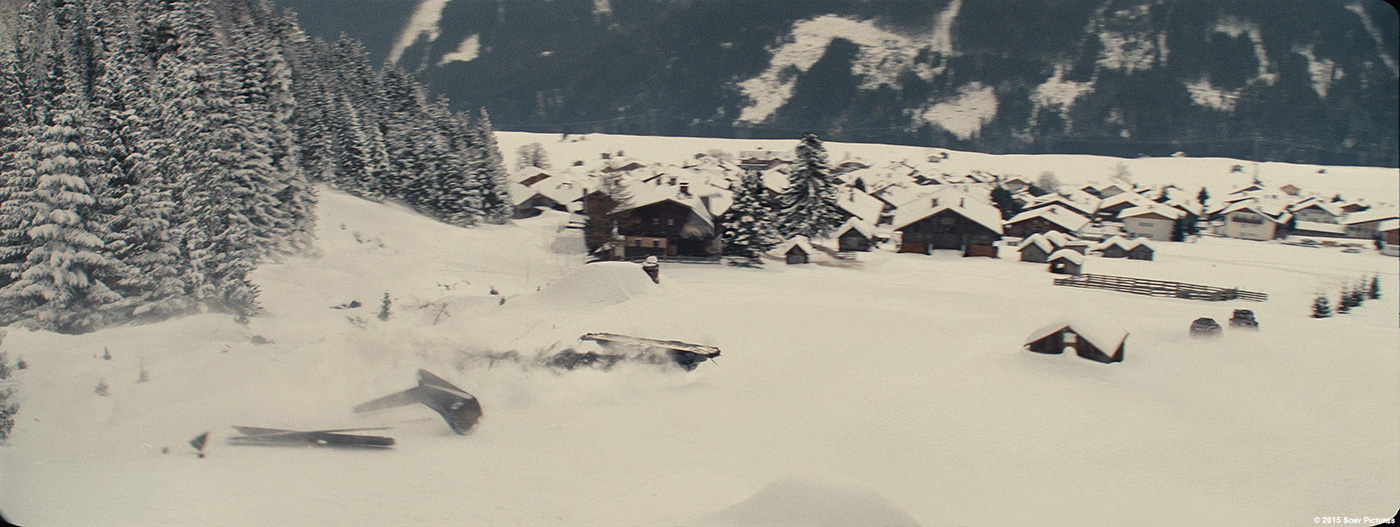Mark Curtis started his career in the visual effects in 2001 at MPC. He worked on many projects and then joined MPC Vancouver in 2009. He has worked on films like WATCHMEN, LIFE OF PI or GUARDIANS OF THE GALAXY. As VFX Supervisor, he took care of the effects of films like FIFTY SHADES OF GREY and FURIOUS 7.
What is your background?
I grew up in small rural community outside Oxford, UK and after attending Art School I got my Undergraduate and Masters Degree in Digital Special Effects from Bournemouth University. After graduating I started as a junior compositor at MPC London where I worked until 2009 when I moved to MPC Vancouver.
How did you and MPC get involved on this show?
MPC has worked on a number of the last Bond movies and had built a good relationship with Steve Begg on SKYFALL and I had worked with Leslie Lerman on QUANTUM OF SOLACE so we had a history and proven track record that allowed us to start talking about the work and our potential involvement very early on.
What was your feeling to be back in this universe?
I was really looking forward to it, I had a great time working on QUANTUM and was excited to get back into the 007 Universe. Bond has such a long history and the production team has such a wealth of experience that the environment you are dropping into could not be more professional and organised. Everything is planned out in the finest detail, which means the mechanics of getting through the work and ensuring that you get everything you need is as smooth as anything your likely to experience in Film production. On a personal level there is still, even after 15 years and over 40 productions, a child-like and gleeful excitement to being involved in a Bond movie!
How was your collaboration with director Sam Mendes and VFX Supervisor Steve Begg?
While we didn’t have a lot of direct interaction with Sam his vision and direction was always very strong and very clear. Through the work he’d already done with the Art Department we were able to hit the ground running with a solid idea of what our target look was going to be. As the sequences and edits evolved the direction we received remained very clear, Sam had a strong and consistent vision for what he wanted from our work which made it very easy to maintain a clear path from start to finish. The more creative and problem solving collaboration happened between us and Steve Begg. Thats where we would take Sam’s vision and breakdown how we wanted to approach it from a technical and creative stand point.
Working with Steve and the rest of his team was probably the most rewarding, open and collaborative relationship I’ve ever had on any film I’ve worked on. Ideas were bounced around, discussed, discarded, re-invented and refined with energy and excitement and always with a smile. More than anything it was this aspect of the Client/Facility relationship that was the most satisfying and rewarding. Especially given the fact that they were in London and we were in Vancouver, its tricky to develop a creative rapport over cineSync and Skype so it was great that it all worked out so well and ran so smoothly.
What was their approach about the visual effects?
Bond movies and especially Sam Mendes Bond movies have a heavy emphasis on realism. They worked extremely hard to get as much as possible in camera. A lot of what you see is completely real. So the approach was really to keep VFX to a minimum and on those occasions where it was necessary it was imperative that it look as real as everything else around it. With so much effort going into creating this realistic Bond universe there was a lot of pressure to ensure we didn’t break the illusion and take the audience out of Sam’s viscerally real vision. As such we worked extremely hard to ensure that our work was as photographically correct as possible and that all our animation and FX were real-world accurate.
What are the sequences done by MPC?
We worked primarily on three sequences. Bonds approach to Mr. Whites cabin. The Alp sequence in the Hoffler clinic and Bonds subsequent chase of Mr. Hinx in the Snow Plane and a sequence in Morocco where Bond is tortured by drill wielding robotic arms.
Can you describe one of your typical day on-set and then during the post?
Unfortunately I wasn’t present for any of the location work as I was busy finishing the last show so my experience was limited to Pinewood. It was here that we shot a lot of the closer angles for the Snow Plane sequence. A full version of the Britten Norman Snow Plane (minus the end half of its wings) was strapped to the top of a gimbal created by SFX supervisor Chris Corbould and his team, this allowed Sam to recreate all the motion required for the flight and subsequent crash. Steve and myself would then discuss what Sam was looking for from each shot and then worked with DP Hoyte Van Hoytema to decide on the best approach to shooting and lighting the scene. While all this was happening the Production and MPC data capture teams would get all the necessary camera data, HDRIs, witness cameras and then work through texture shoots for the snow plane so that we could accurately recreate what was on set.
During Post a typical day would start with a call to MPC London. With a number of key departments scattered in all of MPCs satellite offices around the world and, with MPC London taking on the Torture sequence, a large part of the supervision time was taken up managing each of these disparate offices. With Vancouver, London and Bangalore offices all working together, the sun never set on MPC VFX for SPECTRE. So after a morning call with London we would roll into a cineSync call with Steve and his team. Here we would review the latest work, discuss implications of edit changes, breakdown any feedback from Sam and come up with a plan to address and complete everything in time for general release and the many many different trailers. Then, after our own morning production meeting, we’d roll into the process of getting the work done. CG Supervisor Bryan Litson would guide Animation, Lighting and FX dailies before 2D Supervisor Jan Dubberke would take us through Comp and DMP dailies. Lunch squeezed in the middle would usually end the morning and then, in the afternoon, time would sometimes but not always be set aside to deal with the thing you weren’t expecting… the technical issue in modelling that could derail everything, the new trailer that needs to be delivered in a week, or any number of other exciting and challenging hurdles that you could never have planned for. Then the day would end with an evening call to Bangalore to discuss their work… and then, after dreams of bluescreens, FX simulations and Martinis it would all start over again…. but never ever the same twice.
How did you design and created the building on top of the mountain?
The inspiration and a large part of the design for the Hoffler clinic came from a pre-existing building called Ice-Q at the top of a mountain in Solden. This was the location for the opening of the Alp sequence and provided the basis for our design. The Art Department had already created designs for how this building was going to be expanded to form the final structure. Effectively the cubic building would be duplicated and mirrored to create a cross shaped building. Once this was defined our DMP Lead Daniel Villalba-Sunol worked on the design for the roof of the building as well as the surrounding structures and cable-car station.
While the plates we received had a mountain already present in roughly the right location we ended up completely re-designing the mountain and increasing the size of the Hoffler clinic to give it a more imposing and dominating feel. The mountain was reshaped to accommodate the larger clinic building and the airport carved into the side. The rest of the surrounding valleys were modelled and textured and then this entire alpine environment was reflected into the glass panels of the Hoffler clinic. Even the interior structure of rooms and stairwells in subtly visible through the windows.
A chase happens between a plane and cars. How did you approach this sequence?
The majority of the sequence was blocked out using the practical planes the crew had available on set. These consisted of a plane on a cable rig strung between two cranes, a plane on a trailer, a plane on wheels, a plane towed by a wire and a plane on a skidoo frame. Once the sequence was blocked out we determined which shots could work using the practical planes and which would need to be replaced with the fully CG version. For the practical augmentations we removed all supporting structures (wires, skis, wheels etc), adjusted the ground so it was at the appropriate height, added propellers and pilot and then added in the supporting FX snow.
The FX snow was broken out into 3 main layers, Front Wash, Back Wash and Wake. Front Wash: The snow whipped up off the ground directly behind the engines. Back Wash: The ambient layer or aerated snow created from the turbulence generated by the body and wings of the Snow Plane. Snow Wake: The bow-wave of chunks, particles and snow-mist created as the nose and belly of the plane plow through the snow. Depending on the altitude and velocity of the plane and speed of the propellers all of these different elements would be more or less predominant and their performance would have to be art directed to fit the actions of the plane and the continuity of the sequence. To achieve this, FX Lead James Burke used the following techniques. For the Front Wash, Maya Fluids were used to block out the fluid sim (chosen as its a fast way to block general performance), forces are added to simulate what is happening around the plane in each shot. Once the FX performance is blocked we then push Maya points through this fluid sim to create our velocity and emission sources. These are then used within Flowline (Scanline software) which then generates the high resolution fluid sim used for the final render. For the Backwash, objects are animated to simulate the forces involved in generating the engine wash and the turbulences around the body of the plane, these are then used to create the conical wave effect generated by the propellers and the subsequent turbulence introduced by the wings and fuselage. Once the Front and Back Wash are defined, millions of points are then pumped through these volumes to simulate the grit/powder look that adds texture to the more cloudy layers generated by the fluid sim. The final layer is the Snow Wake, this used the same process described for the Front and Back Wash but added larger chunks of snow into the mix, these were scattered in a wider arc and fine snow-dust trails were added to them and impact FX when they hit the ground. All told there were up to 20 layers of rendered Snow FX for each shot, at which point it was up to 2D Supervisor Jan Dubberke and his team to balance the look and densities of these elements to create the final look.
For the shots where a fully CG plane was required our animator Julia Flanagan looked closely at a number of references shot by the clients of how this particular plane behaved and then accurately replicated this while incorporating the kind of frantic movements and close maneuvering required to generate a real sense of danger. Once complete the techniques outlined above were used to create the associated snow FX that were required.
Later in the movie, James is attached to a torture chair. How did you created the robotic arms?
Again this was more or less defined by the Art Department before we started and there were physical versions on set that we were able to use as reference. We adjusted the design of the drills a little to reflect modern surgical drill design but for the most part the design was already clearly defined. There were some tricky elements to this work and VFX Supervisor Jessica Norman did a fantastic job resolving them. The first was the rigging of the arms. With Bond thrashing around and vibrating in agony we had to be able to lock the drill-bits to his skull and then transmit the vibrations back up through the various joints within the robotic arms while at the same time making it look sturdy and able to force the drills into Bonds skull. The second was the extreme closeup and narrow depth of field of the photography. With sections of the drill arms being so large in frame it would have been very easy for them to look CG. As such a large amount of time was spent modelling fine details like rivets, scratches and dents as well as the fine texturing of the milled surface and finger prints and smudges. Our recent change of renderer to RenderMan RIS made the rendering of this much easier. The global illumination and bi-directional path tracing in RIS gave us a level of photographic realism that would have been much harder to attain in our previous toolset. This, combined with our reflection models of Bond and Madeleine, made for a final image that is as real-world accurate as possible and one that, hopefully, the audience doesn’t question.
Did you created a CG face for James Bond?
We did, if you look very closely its visible in a few shots inside the Snow Plane but primarily it was used in the torture sequence to reflect into the shinny surfaces of the torture device and to receive shadows from it.
How long have you worked on this film?
We started in February 2015 and delivered in October.
How many shots have you done?
I believe the final number was 360.
What was the size of your team?
Across all locations and including production our team was around 160.
What is your next project?
I’ve just started on SULLY, Clint Eastwoods movie telling the story of the A320 that Capt. Sully Sullenberger landed safely in the Hudson… so more planes for me!
A big thanks for your time.
// WANT TO KNOW MORE?
– MPC: Dedicated page about SPECTRE on MPC website.
© Vincent Frei – The Art of VFX – 2015



